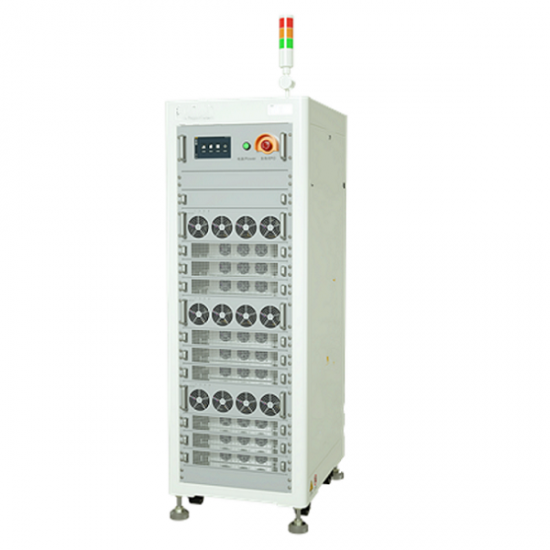Lith Corporation, founded in 1998 by a group of material science doctor from Tsinghua University, has now become the leading manufacturer of battery lab&production equipment. Lith Corporation have production factories in shenzhen and xiamen of China.This allows for the possibility of providing high quality and low-cost precision machines for lab&production equipment,including: roller press, film coater,mixer, high-temperature furnace, glove box,and complete set of equipment for research of rechargeable battery materials. Simple to operate, low cost and commitment to our customers is our priority.
What is an EV Car Battery Lab Line?
An EV (Electric Vehicle) Car Battery Lab Line is a smallscale, flexible production system designed for research, development, and testing of battery cells and packs. It serves as the foundation for innovation, enabling scientists, engineers, and startups to explore new battery chemistries, materials, cell formats, and manufacturing processes before moving to pilot or fullscale production.
Unlike mass production lines or pilot lines, a lab line focuses on experimentation, customization, and rapid iteration, making it ideal for:
Academic research institutions
Battery startups
Material and equipment suppliers
OEM R&D departments
Governmentfunded energy labs
A wellequipped battery lab line allows teams to test hypotheses, validate novel technologies, and generate data that can inform future product development and scaling strategies.
Key Objectives of an EV Battery Lab Line
1. Research and Development
Explore new battery chemistries (e.g., solidstate, lithiumsulfur, sodiumion)
Test advanced materials like silicon anodes, highnickel cathodes, or grapheneenhanced electrodes
Evaluate nextgeneration electrolytes (e.g., ionic liquids, solid electrolytes)
2. Process Innovation
Develop and optimize electrode coating, drying, stacking, and welding techniques
Study the impact of manufacturing parameters (e.g., pressure, temperature, speed) on cell performance
Investigate dry electrode processes or alternative fabrication methods
3. Prototype Production
Build small batches of experimental cells or modules
Customize cell sizes, shapes, and configurations
Assemble sample packs for integration testing with vehicle systems
4. Performance and Safety Testing
Conduct charge/discharge cycles under various conditions
Measure energy density, cycle life, and thermal stability
Perform abuse testing (overcharge, nail penetration, crush, short circuit)
5. Data Generation for ScaleUp
Collect process and performance data for modeling and simulation
Identify scalability challenges early
Support funding applications and investor pitches with tangible results
Types of EV Battery Lab Lines
Depending on the focus area, EV battery lab lines can be categorized into two main types:
1. CellLevel Lab Line
Focuses on individual battery cell development
Covers all steps from electrode preparation to final cell assembly and testing
Ideal for material scientists, electrochemists, and battery startups
2. Module/PackLevel Lab Line
Focuses on integration of cells into modules and battery packs
Includes BMS testing, thermal management design, and mechanical packaging
Often used by automotive OEMs and Tier 1 suppliers during earlystage R&D
Key Stages in a CellLevel EV Battery Lab Line
1. Material Preparation and Mixing
# i. Slurry Preparation
Mixing active materials (e.g., NMC, LFP), conductive additives, and binders
Adjusting ratios to study formulation effects
Can use planetary mixers or ball mills depending on scale
# ii. Solvent Handling
Managing volatile solvents safely in fume hoods or glove boxes
Ensuring consistent viscosity and dispersion
2. Electrode Coating and Drying
# i. Coating
Applying slurry onto current collectors (copper for anode, aluminum for cathode)
Techniques include doctorblading, slotdie coating, or spray coating
Allows control over coating thickness and uniformity
# ii. Drying
Removing solvents in controlled ovens
Critical to avoid defects like cracking or delamination
Parameters like temperature and time are closely monitored
# iii. Calendering
Compressing the dried electrode to achieve desired density and porosity
Affects ion diffusion and electrical conductivity
# iv. Slitting
Cutting coated electrodes into strips of specific width
Enables testing of different electrode dimensions and designs
3. Electrode Assembly
# i. Stacking or Winding
For pouch/prismatic cells: stacking positive and negative electrodes with separators
For cylindrical cells: winding the electrode jellyroll
Precision is key to prevent internal shorts
# ii. Casing Insertion
Placing the electrode stack/jellyroll into the cell casing
Allows testing of different casing materials and sealing methods
# iii. Tab Welding
Connecting electrode tabs to terminals using spot or laser welding
Evaluates weld quality and electrical contact resistance
4. Electrolyte Filling and Sealing
# i. Electrolyte Filling
Injecting liquid electrolyte in a dry room environment (<1% RH)
Different formulations can be tested for performance and safety
# ii. Sealing
Hermetically closing the cell to prevent leakage
Methods include crimping, laser welding, or ultrasonic sealing
5. Formation and Aging
# i. Formation
Initial charge/discharge cycle to activate the cell
Forms the SEI layer on the anode and stabilizes internal chemistry
# ii. Aging
Letting the cell rest under controlled conditions
Helps identify defects like gas generation or internal shorts
6. Testing and Characterization
# i. Electrical Testing
Measuring voltage, internal resistance, capacity, and efficiency
Performing charge/discharge cycles at different rates and temperatures
# ii. Thermal Testing
Monitoring heat generation during operation
Assessing thermal stability and safety margins
# iii. Mechanical Testing
Evaluating structural integrity under compression, vibration, or shock
# iv. Abuse Testing
Simulating extreme conditions (overcharge, external short, crush, thermal runaway)
Validating safety features and failure modes
Key Stages in a Module/PackLevel EV Battery Lab Line
1. Cell Inspection and Matching
Measuring voltage, capacity, and internal resistance
Grouping similarperforming cells to ensure pack balance
Lithium Battery Testing Equipment
2. Module Assembly
# i. Cell Stacking
Arranging cells into module configurations
Testing mechanical layouts and thermal interface strategies
# ii. Busbar Connection
Connecting cells electrically using spot or laser welding
Studying different connection topologies and materials
# iii. TIM Application
Applying thermal paste or pads between cells and cooling plates
Testing different TIMs for heat dissipation
# iv. Housing Installation
Enclosing the module in protective trays
Evaluating mechanical fit and structural strength
3. Pack Integration
# i. Module Placement
Installing modules into the battery enclosure
Testing different pack layouts and mounting techniques
# ii. BMS Installation
Mounting and connecting the Battery Management System
Validating communication protocols and monitoring accuracy
# iii. Cooling System Integration
Installing air ducts or liquid cooling plates
Testing thermal performance under simulated loads
# iv. Wiring and Harnessing
Routing highvoltage cables and CAN communication lines
Ensuring proper insulation and routing paths
# v. Final Assembly and Leak Testing
Closing and sealing the battery enclosure
Performing leak tests for liquidcooled systems
4. Final Testing and Validation
# i. Functional Testing
Verifying BMS communication and control functions
Simulating realworld driving conditions
# ii. Performance Testing
Measuring packlevel energy, power, and efficiency
Conducting dynamic load profiles and drive cycles
# iii. Safety and Reliability Testing
Performing overcurrent, short circuit, and thermal runaway simulations
Subjecting packs to environmental stress (vibration, humidity, temperature extremes)
Supporting Systems in an EV Battery Lab Line
To support accurate experimentation and safe operations, several critical supporting systems are integrated:
1. Dry Rooms and Glove Boxes
Maintain ultralow humidity (<1% RH) for moisturesensitive processes
Essential for electrolyte filling and lithium metal handling
2. Fire Suppression and Safety Systems
Gas suppression systems to protect against thermal events
Emergency shutdowns and explosionproof enclosures
3. Environmental Chambers
Simulate realworld operating conditions
Test thermal behavior under extreme temperatures and humidity
4. Data Acquisition and Analysis Tools
Realtime monitoring of voltage, current, temperature
Software tools for postprocessing and visualization (e.g., MATLAB, Python, LabVIEW)
5. MESLike Tracking Systems
Not full MES, but basic tracking of batches, experiments, and process logs
Supports traceability and repeatability
Benefits of an EV Battery Lab Line
Supports fundamental research and exploration of new technologies
Enables fast iteration and hypothesis testing
Reduces risk before investing in largerscale infrastructure
Facilitates collaboration between academia and industry
Generates proofofconcept data for funding and partnerships
Trains students and engineers in handson battery development
Provides insights into scalability challenges
Design Considerations for an EV Battery Lab Line
When setting up your EV battery lab line, consider the following factors:
Scope – celllevel, module/packlevel, or both?
Battery Chemistry – Liion, solidstate, sodiumion, etc.?
Cell Format – cylindrical, pouch, prismatic, or custom?
Throughput – number of cells or modules per week/month
Level of Automation – manual, semiautomatic, or limited automation
Space and Infrastructure – clean/dry room requirements, ventilation, utilities
Safety Features – fire suppression, emergency systems, PPE
Budget and Funding Sources – grants, investors, institutional support
Leading Companies Providing EV Battery Lab Line Equipment
Several global companies offer labscale solutions or components tailored for battery R&D:
MTI Corporation – Complete labscale battery equipment and glove boxes
Brucker & Kjaer Electrochemistry – Advanced testing systems
Gamry Instruments – Electrochemical analyzers and cyclers
Neware, Bitrode – Battery testing and formation systems
Enerize Corporation – Labscale coating and assembly machines
Hanson Robotics, Gree EnergyTech – Smallscale assembly and integration tools
Trumpf, Coherent, IPG Photonics – Laser welding systems
Solvay, BASF, 3M – Material and chemical suppliers for testing
Need Help Setting Up or Optimizing Your EV Battery Lab Line?
If you're looking to design, build, or optimize your EV battery lab line, I can help you with:
Lab layout planning – including dry rooms, workstations, and safety zones
Equipment selection – recommending bestinclass tools for your scope
Process flow design – from mixing to final testing
Material sourcing – identifying reliable suppliers for chemicals and components
Training and SOP development – ensuring safe and repeatable operations
Cost estimation – budgeting based on your lab’s size and goals
All you need to do is provide the following information:
Battery type and chemistry (e.g., NMC, LFP, solidstate)
Cell format preference (pouch, cylindrical, prismatic, or custom)
Number of cells/modules to produce per month
Available space and infrastructure details
Current team expertise and goals (academic, startup, industrial R&D)



 Online service
Online service
